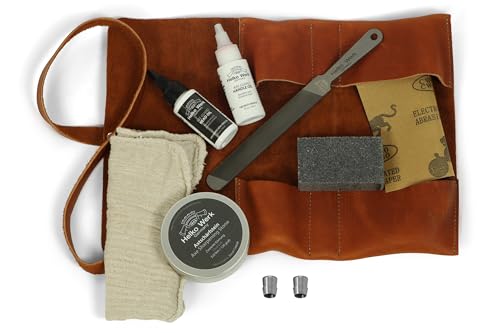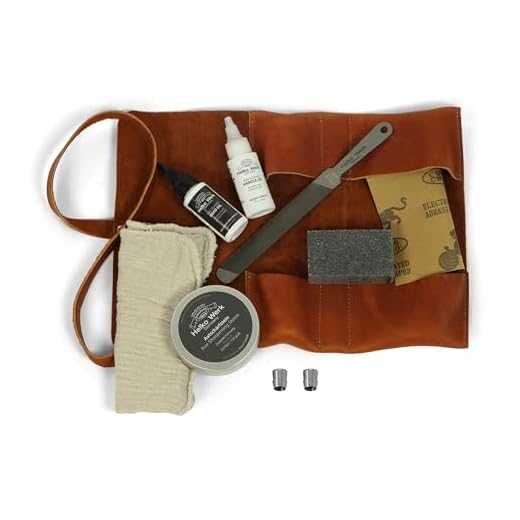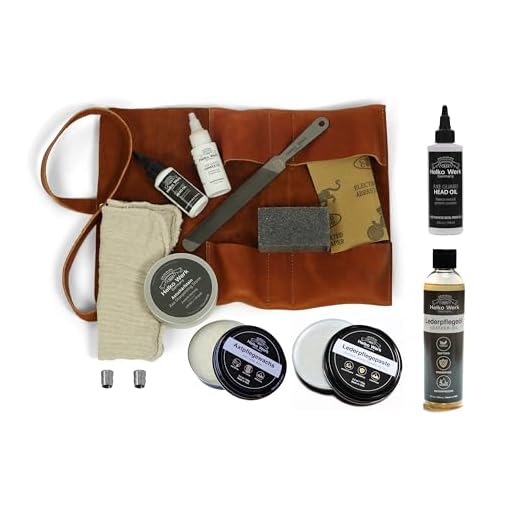




An axe is a tool that has been used for centuries by people all over the world. It is a versatile tool that can be used for cutting wood, chopping trees, and even as a weapon. However, like any tool, an axe is not invincible and can break under certain conditions. One common question people have is whether an axe will break if the shaft is slightly damaged.
The answer to this question depends on the extent of the damage and the quality of the axe. If the shaft is only slightly damaged, such as having a small crack or chip, it is unlikely to break immediately. However, over time, the damage can worsen and eventually lead to a breakage. It is important to note that even a small crack can weaken the shaft and make it more prone to breaking.
It is also worth mentioning that the type of wood used for the shaft can affect its durability. Some types of wood, such as hickory and ash, are known for their strength and resilience, making them less likely to break even if slightly damaged. On the other hand, softer woods like pine or birch may be more susceptible to breakage.
To ensure the longevity of your axe, it is essential to regularly inspect the shaft for any signs of damage. If you notice any cracks or chips, it is advisable to replace the axe or repair the shaft to prevent further damage. Remember, a well-maintained axe can last for years, providing you with reliable service for all your cutting and chopping needs.
Will a damaged shaft affect the durability of an axe?
When it comes to the durability of an axe, the condition of the shaft plays a crucial role. The shaft, also known as the handle, provides the necessary support and stability for effective swinging and striking. It is typically made of wood, fiberglass, or metal, depending on the type of axe.
Impact of a damaged shaft
If the shaft of an axe is slightly damaged, it can indeed affect its durability. Even a small crack or split in the wood or a dent in a metal or fiberglass handle can compromise the overall strength and functionality of the axe.
A damaged shaft can lead to various issues, including:
- Reduced strength: Any sort of damage weakens the structural integrity of the shaft, making it more prone to bending, breaking, or splintering during use.
- Inefficient energy transfer: A damaged shaft may not effectively transfer the force and energy from your swing to the blade, resulting in reduced cutting power and overall performance.
- Increased risk of accidents: A weakened shaft increases the likelihood of the axe head becoming detached or the handle snapping during use, posing a serious safety hazard.
Importance of regular maintenance
To ensure the longevity and durability of an axe, it is vital to regularly inspect and maintain the shaft. This includes checking for any signs of damage such as cracks, splits, or dents, and promptly addressing them.
If the shaft is made of wood, applying a protective coating or oil can help prevent moisture damage and maintain its strength. For metal or fiberglass handles, keeping them clean and free from rust or corrosion is important for preserving their durability.
Additionally, it is crucial to store the axe properly in a dry and secure location to prevent unnecessary exposure to moisture or extreme temperature changes, which can also contribute to shaft damage.
By taking these measures, axe owners can ensure that their tools remain in optimal condition, providing reliable performance and durability for a longer period of time.
Understanding the impact of a slightly damaged shaft on an axe’s performance
When it comes to the performance of an axe, the shaft plays a critical role. The shaft, also known as the handle, provides stability, control, and power. However, even a slightly damaged shaft can have a significant impact on the overall performance of the axe. Let’s delve into how a damaged shaft affects an axe’s performance and whether it can lead to breakage.
1. Stability: A damaged shaft compromises the stability of the axe. Cracks or fractures in the wood can cause the axe head to loosen or wobble, leading to reduced accuracy and precision. This instability can make it challenging to strike the target effectively, especially for heavy-duty tasks like chopping wood.
2. Control: The shaft is essential for maintaining control over the axe. A damaged shaft can weaken your grip, making it more difficult to wield the axe with precision and control. This lack of control can not only affect the accuracy of your strikes but also increase the risk of accidents or injuries during use.
3. Power: An axe’s power comes from the force exerted by the user through the shaft. When the shaft is damaged, it loses its ability to effectively transmit the user’s force to the axe head. This loss of power can result in weaker strikes, making it harder to penetrate tough materials or complete tasks efficiently.
Will the axe break if the shaft is slightly damaged?
Whether an axe will break or not depends on the extent of the damage. A slightly damaged shaft may still be able to withstand regular use without breaking. However, it’s important to note that even slight damage can potentially worsen over time, especially with continued use and exposure to harsh conditions.
To ensure the longevity and safety of your axe, it is recommended to inspect the shaft regularly for any signs of damage and address them promptly. If you notice any cracks, splintered wood, or other significant damages, it is advisable to replace the shaft to maintain optimal performance and reduce the risk of breakage.
In conclusion, a slightly damaged shaft can significantly affect an axe’s stability, control, and power. While a slight amount of damage may not immediately result in breakage, it is crucial to address any damage promptly to avoid further deterioration and potential breakage. Regular inspection and maintenance of the shaft are key to ensuring the longevity and performance of your axe.
The Importance of a Sturdy Shaft for Axe Functionality
An axe is a versatile tool that has been used for centuries for various purposes, including chopping wood, clearing land, and even as a weapon in some instances. The functionality of an axe relies heavily on its design and construction, with one of the key components being the shaft.
What is the shaft?
The shaft, also known as the handle or helve, is the long part of the axe that the user grips when using the tool. It acts as a lever, allowing the user to generate force and control the movement of the blade. The shaft is usually made from wood, fiberglass, or metal, each material offering different advantages and disadvantages.
Why does the shaft need to be sturdy?
The sturdiness of the shaft is of utmost importance for the functionality and safety of the axe. A sturdy shaft ensures that the force exerted during use is effectively transferred to the blade, allowing for efficient cutting power. If the shaft is weak or damaged, it may fail to withstand the force during impact, leading to a decrease in cutting performance or, in extreme cases, breakage.
Furthermore, a sturdy shaft provides stability and control while holding the axe. It allows the user to maintain a firm grip and maneuver the tool easily, reducing the risk of accidents or mishaps. A damaged or weakened shaft may compromise the user’s ability to control the axe, potentially leading to injuries.
Moreover, a strong and durable shaft increases the overall lifespan of the axe. With regular use, an axe undergoes significant strain and impact, especially during intense chopping tasks. A sturdy shaft can withstand these repeated stresses over time, ensuring that the axe remains functional and reliable for years to come.
In conclusion, the shaft plays a crucial role in the functionality and safety of an axe. It needs to be sturdy to effectively transfer force to the blade, provide stability and control, and increase the overall durability of the tool. Regular inspection and maintenance of the shaft are essential to ensure optimal performance and longevity of the axe.
Examining the Potential Risks of Using an Axe with a Damaged Shaft
When it comes to using an axe, it is crucial to prioritize safety at all times. One significant factor to consider is the condition of the axe’s shaft. While a slightly damaged shaft may not seem like a serious issue, it can pose potential risks that should not be ignored.
1. Decreased Stability:
Even a minor crack or dent in the axe’s shaft can affect its overall stability. This can make it difficult to swing the axe with precision, potentially leading to inaccurate strikes. The reduced stability can compromise your control over the axe, increasing the chances of accidents or injuries.
2. Increased Vibration:
A damaged shaft can also result in increased vibration when using the axe. This vibration can cause discomfort and fatigue, making it harder to maintain a steady grip on the tool. In extreme cases, excessive vibration can even lead to hand and arm injuries.
3. Shaft Failure:
Although a slightly damaged shaft may seem harmless, it can weaken the overall structural integrity of the axe. Over time, the damage may worsen, leading to a complete failure of the shaft. This can result in the axe head detaching during use, posing significant danger to both the user and those nearby.
It is important to note that using an axe with a damaged shaft can also void any warranty or liability coverage provided by the manufacturer.
To ensure safety while using an axe, it is recommended to inspect the shaft regularly and replace it if any signs of damage are present. By doing so, you can mitigate potential risks and enjoy the benefits of a well-maintained and safe tool. Remember, prioritizing safety is crucial when working with any tools, including an axe.
Tips for maintaining and repairing a damaged axe shaft
Having a damaged axe shaft can greatly impact the functionality and longevity of the tool. However, with proper maintenance and repair, you can effectively prolong the life of your axe. Here are some tips to help you maintain and repair a damaged axe shaft:
- Regular inspection: It is important to regularly inspect your axe shaft for any signs of damage. Check for cracks, splinters, or any other visible damage that may weaken the shaft.
- Cleaning: Keep the axe shaft clean by wiping it down after every use. This will help prevent dirt and debris from accumulating, which can cause damage over time.
- Sanding: If you notice any rough spots or splinters on the axe shaft, use sandpaper to smooth them out. Be sure to follow the wood grain to avoid further damage.
- Sealing: Consider sealing the axe shaft with a protective finish to prevent moisture penetration. This can help prevent swelling, warping, and other damage caused by moisture.
- Reinforcement: If the damage on the axe shaft is minor, you can reinforce it by applying epoxy or wood glue to the affected area. Make sure to follow the manufacturer’s instructions for proper application and drying time.
- Replacement: In severe cases where the damage is significant or the shaft is compromised, it may be necessary to replace the axe shaft entirely. Consult a professional or purchase a new shaft that matches the type and size of your axe head.
Remember, maintaining and repairing a damaged axe shaft is crucial for optimal performance and safety. By taking preventive measures and addressing any issues promptly, you can ensure that your axe stays in good condition for years to come.






